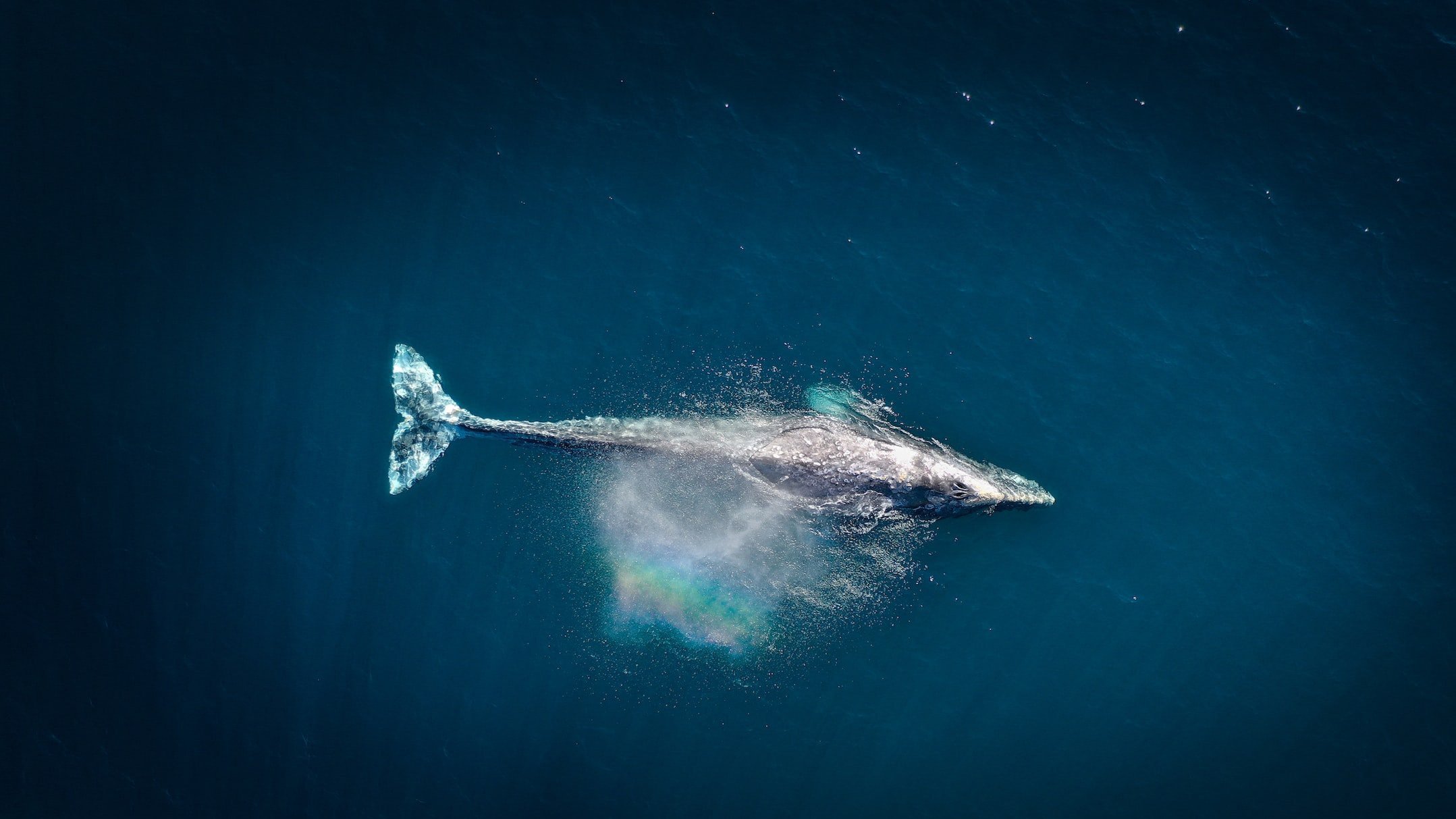
West Coast Whales
Meet the Pacific Rim Whale Festival’s Guest of Honour: The Grey Whale
With a significant focus on marine ecosystems and coastal life education, the Pacific Rim Whale Festival celebrates the continued protection and annual return of migrating Pacific grey whales to the coastal waters of the communities of Tofino, Ucluelet and Pacific Rim National Park Reserve. An estimated 16,650 grey whales make the journey each year from the Baja Peninsula’s breeding and calving lagoons in Mexico, toward their summer feeding grounds in the Bering and Chukchi Seas near the Arctic. The migrating grey whales join resident grey whales, orcas, humpbacks and the occasional minke that can be seen in these Pacific Northwest waters any time of year off of the West Coast of Vancouver Island.
Size / Appearance:
Medium to dark grey in tone, with a mottled appearance due to white patches and scratches, as well as barnacles and orange sea lice living on their skin.
Adult grey whales carry the most external parasites than any other cetacean; at least 180kg of acorn barnacles and sea lice.
No dorsal fin, but a series of vertebral bumps or "knuckles" along their lower back.
Adult male greys are approx 14m long, females usually being a bit longer (for reference, a school bus is about 12m long).
A fully grown grey weighs in at between 27,200 and 36,300 kg (almost twice as heavy as a fully loaded school bus).
Surface Behavior:
Migrating, greys swim at speeds of 4.8 to 9.6 km per hour.
Dive for 3 to 7 minutes when travelling or feeding and then surface blow 3 to 6 times.
Depending on the depth of water, many dives are shallow with the fluke rarely raised.
During deep dives, the knuckles are clearly visible as the back arches and the fluke is raised high in the air.
A Grey Whale’s Yearly Calendar:
January-February: Whales spend the winter in the warm waters off Baja California, Mexico.
March-April-May: They then swim north, hugging the west coast of North America.
June-July-August-September-October: In the Bering and Chukchi Seas, the whales spend the summer feeding. (To the delight of Vancouver Island whale watchers, some greys stop to eat at this latitude instead of continuing north with the rest of the population.)
November-December: Greys then swim back down to Baja, usually faster and further offshore than during the northward leg of the migration.
In total, the 16,000 to 22,500 km round trip (depending on how far north they go) is one of the longest migrations of any mammal
Why Migrate in the First Place?
Calves are born with hardly any insulating blubber and cannot survive in cold water
Baja offers warm, protected calving lagoons
Grey whale’s food (amphipods, mysids and crab larvae) is found in cold, nutrient-rich waters, so the whales must swim north to feed
Grey whales fast for several months of the year, relying on fat reserves to power their journey from their feeding grounds to Baja breeding grounds for the winter and back.
Birthing Cycle:
Reproductive rates can vary among individuals, however typically the cycle is two years
Females reach sexual maturity at 5 to 11 years of age
Mating takes place in Baja during the winter
The pregnant female then makes one full trip to the feeding grounds and back, returning to Baja to give birth to a single calf 12 to 13 months later.
Newborn calves are about 4.5m long, weigh 500-680 kg, and can gain 25 - 90 kg a day while nursing on the mother’s rich, fatty milk.
Calves and mother stay in Baja until the calf has enough blubber insulation to survive the cold waters of feeding grounds.
Mothers and calves travel together in pairs, but greys do not maintain larger family groups like some other types of whales do.
The calf will nurse for 7 to 8 months, at which time the calf is weaned and the pair returns to Baja, where the female is able to mate again the following January.
Food and Feeding:
Grey whales are mainly coastal, benthic feeders, with feeding depths ranging between 3-120m.
Feed on a variety of benthic and planktonic prey including amphipods, mysids and crab larvae.
Eat at least 1 - 1.3t of food per day.
Feed from the sediment on the seafloor by creating suction through retraction of its 1.4-ton tongue as it opens its mouth and swims slowly among the seabed.
Sediment is filtered through baleen (130-180 plates of flexible, fine-toothed combs hanging from each side of the upper jaw) and prey is captured and scooped up by the tongue.
Grey Whale History:
The Nuu-chah-nulth First Nations people once hunted grey whales off the coast of Vancouver Island. Hunting the massive animals using handcrafted harpoons thrown from cedar canoes took incredible bravery, skill, and planning.
Grey whales are unfortunately no longer as widely distributed around the world's oceans as they once were.
Our Eastern North Pacific grey whale population has been commercially hunted close to extinction twice over the past few hundred years, but greys have been fully protected by the International Whaling Commission since 1947.
There are approximately 14,500+ grey whales in the Eastern North Pacific grey whale population, and Clayoquot Sound is one of the most accessible and reliable places to view them.
There is also a very small group of about 240 Western North Pacific Grey Whales that forage off the northeastern coast of Sakhalin and along the southeastern Kamchatka Peninsula
Until recently, the Eastern and Western Pacific population were thought to be separate breeding populations; it was believed the Sakhalin population moved south to at least Japan in the winter.
However, through satellite tracking, photo and genetic ID, it is now understood that a significant population migrates past the Bering Sea to Mexico for the winter.
A third population of now-extinct grey whales once lived in the northern Atlantic Ocean.
References:
http://www.acsonline.org (American Cetacean Society)
https://www.iucn.org/sites/default/files/import/downloads/western_gray_whale_fact_sheet.pdf (International Union for Conservation of Nature)
https://www.mmc.gov/priority-topics/species-of-concern/western-north-pacific-gray-whales/
Mark Carwardine, M. (2020) Handbook of Whales, Dolphins and Porpoises. London: Bloomsbury.
Learn more about the ongoing research of these animals by joining us and guest biologists for our educational events during the festival.
